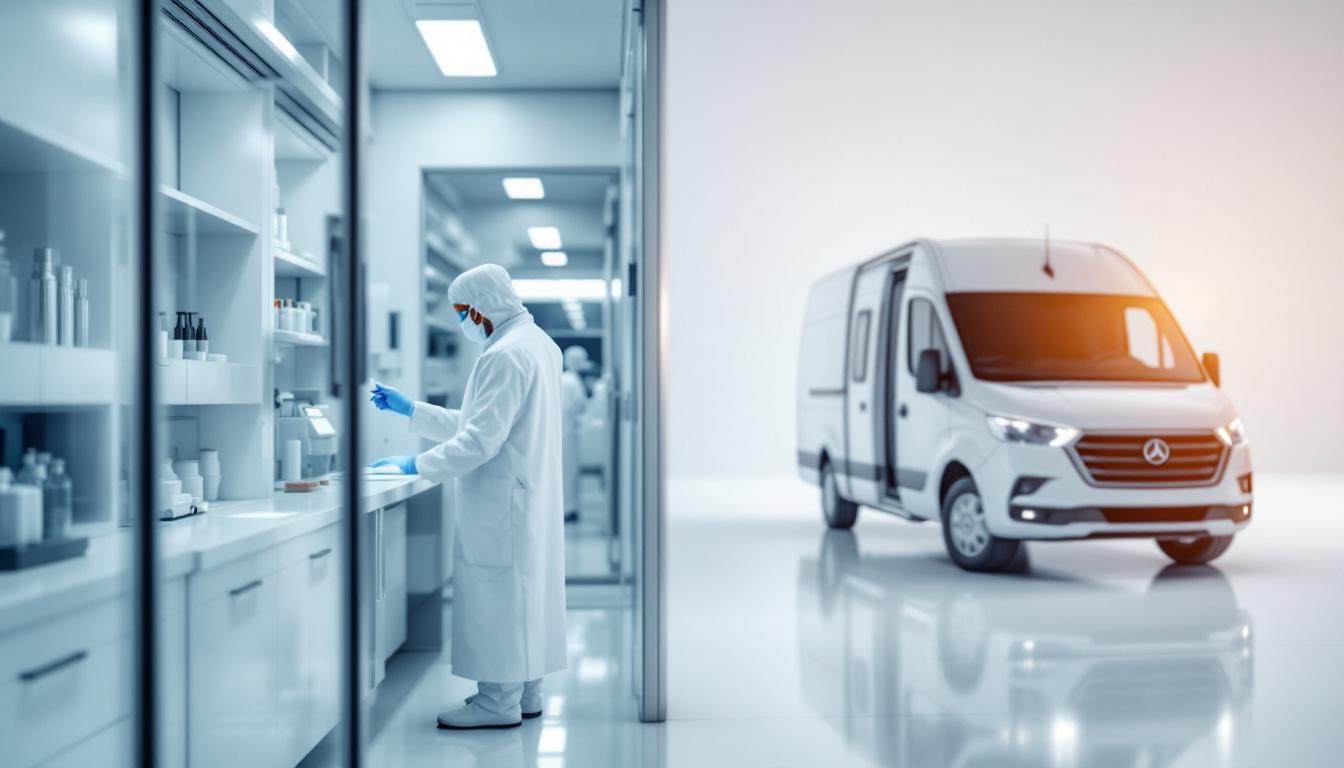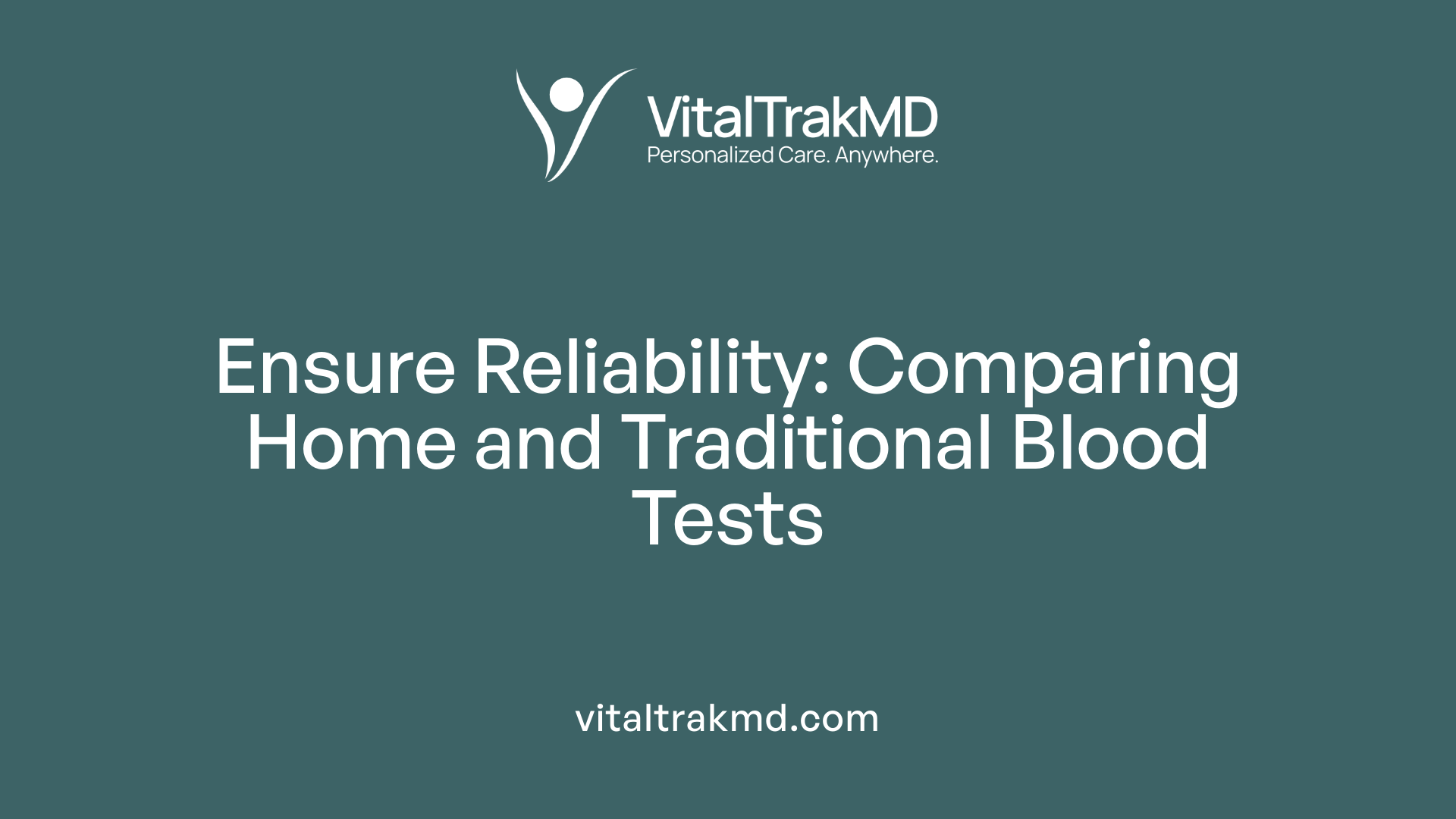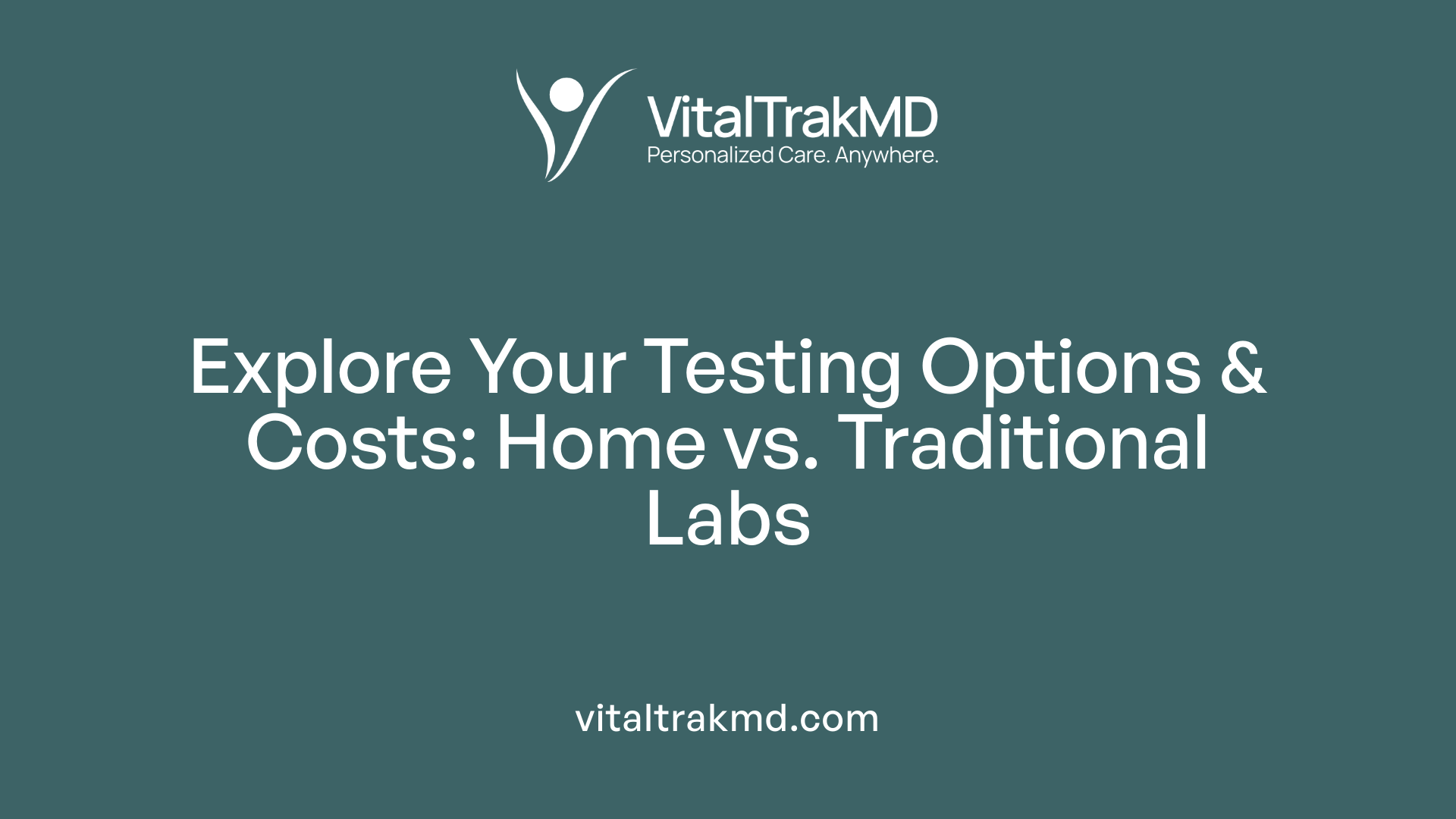Home Lab Services vs Traditional Lab Draws

A Comparative Look at Home Lab Services and Traditional Laboratory Draws
As healthcare evolves, so do the methods by which patients can access vital diagnostic testing. Traditional laboratories have long been the standard, requiring patients to visit facilities, wait in crowded environments, and undergo procedures on-site. The rise of mobile lab services offers an innovative alternative, bringing blood draws directly to patients' homes and workplaces. This article explores the distinctions between these two approaches, their benefits, safety, accuracy, and what the future holds for at-home blood testing.
Understanding Mobile Phlebotomy and Traditional Lab Visits

What is mobile phlebotomy?
Mobile phlebotomy is a healthcare service where trained professionals visit a patient’s home, office, or another convenient location to draw blood samples for lab testing. This service is designed to provide a more comfortable and accessible option compared to visiting a traditional laboratory.
The process involves certified technicians arriving at a scheduled time, performing blood draws using sterile techniques, and safely transporting samples to accredited testing laboratories. These services are especially beneficial for individuals with mobility issues, chronic illnesses, or for families with young children who may experience anxiety during blood draws.
How does mobile phlebotomy compare to traditional laboratory visits?
Traditional lab visits generally require patients to drive to a healthcare facility, check in, wait in crowded waiting rooms, and then undergo their blood tests. This process can be time-consuming, stressful, and sometimes inconvenient, especially for those with busy schedules or health challenges.
Mobile phlebotomy offers several advantages:
- Convenience: Patients avoid travel and wait times, getting tested at their preferred location.
- Comfort: Performing blood draws in familiar environments reduces stress, particularly for children and anxious patients.
- Flexibility: Appointments can be scheduled during evenings or weekends to fit personal routines.
- Safety: Fewer interactions in crowded settings lower the risk of illness exposure.
- Personal Attention: Technicians focus solely on one patient at a time, ensuring accuracy and comfort.
Both methods provide accurate lab results, but mobile phlebotomy emphasizes patient-centered care by integrating medical services into daily life. For many, this shift means better compliance and less disruption, leading to more consistent health monitoring.
| Aspect | Traditional Lab Visits | Mobile Phlebotomy | Notes |
|---|---|---|---|
| Travel | Required | Not needed | Saves time and energy |
| Waiting | Often long | Usually none | Improves experience |
| Environment | Commercial lab | Home, office, or personal space | More comfortable |
| Flexibility | Limited | High | Appointments scheduled around patient |
| Exposure Risk | Higher in crowds | Lower in private setting | Especially important during outbreaks |
| Personal Care | Standard | Personalized attention | Focus on one patient |
As the healthcare landscape evolves, mobile phlebotomy is becoming increasingly popular, with the market growth reflecting rising demand for convenient, patient-friendly testing options. Companies like LabRetriever, with decades of experience, ensure professional and secure sample collection, making this service a reliable alternative for many patients.
In summary, mobile phlebotomy bridges the gap between modern healthcare needs and convenience, transforming how and where blood testing can be performed.
Accessibility and Patient Convenience in Blood Testing

Can you get lab tests done at home, and what are the benefits?
Absolutely, it is now possible to have lab tests performed right at home through specialized mobile phlebotomy services. These services employ trained healthcare professionals who visit your home, workplace, or other preferred locations to collect blood samples necessary for various tests.
The advantages of at-home lab testing are numerous. It offers unmatched convenience, particularly for individuals with mobility challenges, busy schedules, or those who find visiting clinics stressful. Patients can schedule appointments at times that work best for them, eliminating the need to wait in crowded clinic waiting rooms.
Moreover, performing tests at home minimizes exposure to other sick patients, which is a notable benefit during health crises like pandemics. It also allows for a more relaxed environment, reducing anxiety—especially for children, seniors, or anyone with health-related stress.
By providing personalized care and dedicated attention, mobile phlebotomy services enhance overall patient satisfaction. These services also ensure safety and hygiene through sterile techniques and proper sample handling, with samples processed at certified laboratories.
In summary, at-home lab testing is transforming healthcare by making testing more accessible, comfortable, and convenient, ultimately encouraging better compliance with health monitoring and timely diagnosis.
Safety, Accuracy, and Reliability of Home vs. Traditional Testing

Are at-home blood tests safe and reliable?
At-home blood tests are generally considered safe and dependable, particularly when conducted using FDA-approved or FDA-authorized kits. These kits require patients to collect samples at home following clear instructions, after which samples are processed in CLIA-certified laboratories, ensuring high standards of quality and accuracy. They can effectively screen for a range of health conditions such as diabetes, infections, anemia, and even some cancers. The benefits include privacy, convenience, and the ability for patients to monitor their health more regularly.
However, there are risks involved. Improper sample collection or handling can lead to inaccurate results. Misinterpretation of data without professional guidance might cause unnecessary worry or false reassurance. Therefore, it is vital for patients to adhere strictly to the provided instructions and consult healthcare providers for confirmation and further interpretation of results. While at-home tests serve as valuable preliminary tools, they should complement—rather than replace—professional medical advice.
How does the accuracy of mobile and traditional lab testing compare?
Studies show that the accuracy of mobile, traditional, and home-based testing can be quite similar, particularly when tests are performed correctly and by experienced professionals. Traditional labs usually offer very high accuracy due to advanced equipment, strict procedural controls, and expert staff, enabling rapid and comprehensive analysis.
Mobile lab services and home testing kits, on the other hand, provide remarkable convenience and tend to maintain high accuracy when the technology and personnel involved meet quality standards. Mobile phlebotomists, for example, are trained to collect blood samples carefully, and samples are sent to accredited laboratories for analysis.
However, variability can occur with home testing kits, especially if instructions aren't followed properly or samples are mishandled. The reliability of these tests hinges on user compliance and proper sample collection techniques.
In conclusion, whether opting for traditional, mobile, or home testing, the results can be trustworthy, provided quality protocols are maintained. For critical diagnoses, confirmatory testing through a clinical setting is recommended, ensuring accuracy and patient safety.
| Testing Method | Typical Accuracy Range | Influencing Factors | Key Advantage |
|---|---|---|---|
| Traditional labs | 95-99% | Advanced equipment, experienced staff | Fast, comprehensive results |
| Mobile lab services | 93-98% | Skilled technicians, proper sample handling | Convenience, timely results |
| Home testing kits | 90-95% | User adherence, sample collection technique | Privacy, flexibility, and accessibility |
As healthcare continues to evolve, the integration of mobile and home testing options offers a promising complement to traditional facilities, enhancing patient access and health management.
Types of Tests Available and Cost Factors

What types of tests are available through home lab services compared to traditional labs?
Home lab services provide a broad spectrum of diagnostic tests similar to those offered in conventional laboratory settings. Patients can access basic panels such as Complete Blood Count (CBC), lipid profiles, blood glucose levels, kidney and liver function tests, as well as tests for vitamin and mineral deficiencies, blood type, and blood pressure monitoring.
These services bring the laboratory to the patient's doorstep, removing the need for travel and waiting times in busy clinics or hospitals. The samples collected at home are processed in high-standard, accredited laboratories ensuring that test results are accurate and reliable. Patients receive digital reports that are comparable to traditional in-person testing.
While traditional labs often offer immediate results and a wider range of advanced diagnostics like imaging and specialized tests, home labs focus on providing convenience, privacy, and ease of access. They are especially beneficial for seniors, busy professionals, and individuals with mobility issues.
The process of home testing is supported by online platforms that facilitate scheduling and result delivery, making it a flexible alternative to clinic visits. Overall, home and traditional labs serve different needs but overlap significantly in routine testing, with home labs emphasizing accessibility and comfort.
| Test Type | Traditional Lab Availability | Home Lab Availability | Notes |
|---|---|---|---|
| CBC | Yes | Yes | Standard blood count test |
| Lipid Profile | Yes | Yes | Cholesterol-related test |
| Blood Glucose | Yes | Yes | Diabetes monitoring |
| Function Tests (Liver, Kidney) | Yes | Yes | Organ health assessment |
| Vitamin Deficiency Tests | Limited in clinics, often send-out | Yes | Includes vitamin D, B12 |
| Blood Type | Yes | Yes | Blood compatibility |
| Blood Pressure Monitoring | Yes (via machines) | No | Requires additional devices |
What are the cost considerations and insurance coverage for at-home lab services?
The cost for at-home lab testing varies depending on the type of test, the provider, and geographic location. Many services offer transparent pricing and flexible payment options, especially for patients without insurance. The affordability of these services makes healthcare more accessible, particularly in remote or underserved areas.
Insurance plans, including Medicare and Medicaid, can often cover mobile lab tests if they are medically necessary. Coverage typically requires prior authorization or a referral from a healthcare provider. For example, Medicare generally covers home blood draws for eligible homebound individuals under Part B.
Patients should verify their insurance coverage before scheduling a test to understand any copayments, coinsurance, or specific requirements. For those without insurance or with limited coverage, financial assistance programs, sliding scale fees, and payment plans are available to reduce out-of-pocket costs.
Many insurance providers recognize the benefits of mobile testing, especially in reducing hospital visits and improving patient compliance, which can lead to better health outcomes overall.
| Cost Factors | Traditional Lab | Home Lab | Additional Details |
|---|---|---|---|
| Test Prices | Usually higher due to facility overhead | Often lower, bundled packages | Cost-effective for routine testing |
| Insurance Coverage | Widely accepted; varies by plan | Varies; often covered if necessary | Need preauthorization in some cases |
| Payment Options | In-house billing, insurance billing | Flexible payment plans, assistance programs | Enhances affordability |
| Out-of-Pocket | Often higher without insurance | Can be minimal with insurance inclusion | Cost benefits especially for chronic conditions |
Overall, the move toward at-home testing aims to balance affordability with medical accuracy, providing a practical option for many patients seeking routine diagnostics and ongoing health monitoring.
Transforming Healthcare Access with Home Lab Services
The landscape of diagnostic testing is undergoing a significant transformation, with home lab services playing an increasingly vital role. They offer unparalleled convenience, enhanced safety, and personalized care, especially benefiting vulnerable populations like the elderly and those with mobility challenges. While traditional labs continue to meet complex diagnostics needs, the evolution of AI, robotics, and digital health platforms will further integrate at-home testing into mainstream healthcare. As technology advances and consumer preferences shift toward more accessible, less invasive options, the future of blood testing promises greater accuracy, efficiency, and patient-centered care. Embracing these innovations will ensure that healthcare continues to become more inclusive, efficient, and tailored to individual needs.
References
- Mobile Lab Draws vs Traditional Labs: What's the Difference?
- Mobile Phlebotomy vs. Traditional Labs: Why Beaumont Residents ...
- Comparing Home Lab Testing vs. Traditional Lab Visits
- Home Mobile Blood Work: On-Site Lab Testing Services
- Can Blood Be Drawn At Home? - PediaLabs
- What Will Blood Testing Look Like In The Near Future?
- At-home Blood Draw Service: Get Your Tests Done Hassle-free
- Mobile Phlebotomy for Home Health Agencies | DLW Services
- Home Phlebotomy Services - Care at Home
- Comparing Home Lab Testing vs. Traditional Lab Visits
Recent articles
Want to Feel Better and Live Healthier?
Join hundreds of patients taking control of their health with personalized care that fits their life – not the other way around.
Rated 4.8/5 by 32+ customers







